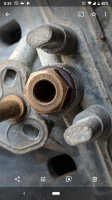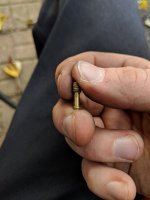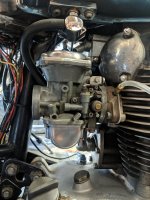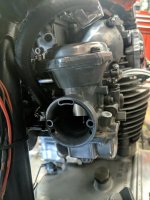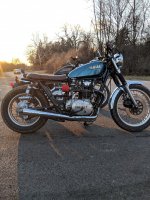Prisondawg
XS650 Addict
I know what you're going to say
This is all covered in the tech section.
Try searching other threads.
Read the carb guide
But this is such a finicky situation that it truly takes experience.
I've ordered the uni filters with the red sock.
My bike is an 81 engine with bs38s from a 78 special.
My pilot is 27.5 .
My I don't know what my main jet size is . It says 2.0 which doesn't seem consistent with the other increments discussed on these forums. I know most people can get away with moving up a size on the mains, maybe 2. Possibly going up a clip and going up a size on the pilot.
I don't think I have a movable clip position.
I'm at 614' elevation.
My question is, what size is my main jet .
Where can I order a main jet right now.
And since I'm using bs38s on an 81 engine, which carb boots do I need to buy so I can get a tighter seal.
One day I hope to be a guru answering the same questions over and over to repay my debt.
Thanks in advance
This is all covered in the tech section.
Try searching other threads.
Read the carb guide
But this is such a finicky situation that it truly takes experience.
I've ordered the uni filters with the red sock.
My bike is an 81 engine with bs38s from a 78 special.
My pilot is 27.5 .
My I don't know what my main jet size is . It says 2.0 which doesn't seem consistent with the other increments discussed on these forums. I know most people can get away with moving up a size on the mains, maybe 2. Possibly going up a clip and going up a size on the pilot.
I don't think I have a movable clip position.
I'm at 614' elevation.
My question is, what size is my main jet .
Where can I order a main jet right now.
And since I'm using bs38s on an 81 engine, which carb boots do I need to buy so I can get a tighter seal.
One day I hope to be a guru answering the same questions over and over to repay my debt.
Thanks in advance

